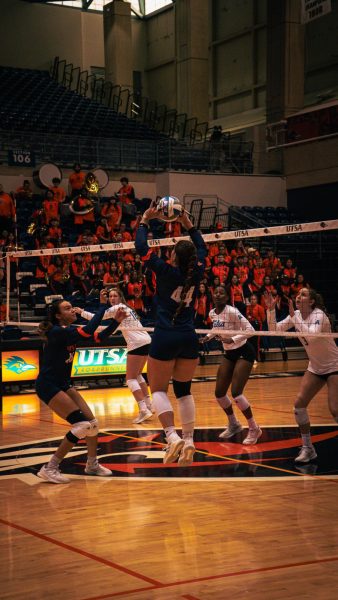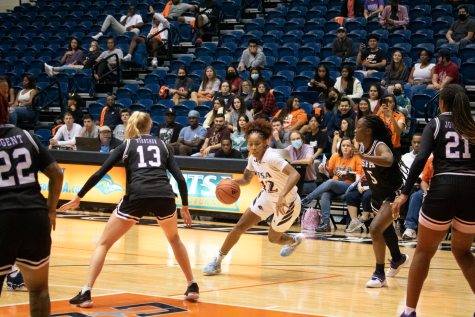Disney’s Moana: Not your average princess
December 15, 2016
Disney has released their newest princess this past weekend and she came with a bang. Moana (voiced by Auli’i Cravalho) has defiantly earned her spot among the fleet of Disney’s legendary characters. The film beautifully adapted Polynesian myth into its plot, honoring the culture throughout the entire movie, all while still tapping into the demographics of young teens and kids, as per Disney’s usual.
The beginning opens up with a a background for the audience on the creation on life according to Polynesian myth and sets up the main conflict for the rest of the movie following with an opening scene showing an innocent baby Moana playing with the magically moving surf. Unfortunately, she is discouraged from being in the open ocean leading to a musical number as she progresses in age, but never loses her love of the sea.
Disaster hits home when there are no more fish in the surrounding reef and the plants on the island are dying. Though through much resistance by her father, Moana takes it upon herself to fix this crisis, teaming up with the demigod Maui (voiced by Dwayne “The Rock” Johnson), a mountain of muscle, ego, tattoos, and hair. Through constant squabble, catchy musical numbers, and battles with abnormally large crustaceans, they end up restoring the heart of Te Fiti, the ancient goddess of creation, and saving the world.
Instead of having a fantasy character who accomplishes their goals without failure, Moana was created with flaws but pushes through her failures, ultimately becoming the hero in an emotional ending. Realizing the true identity of Te Ka, Moana does something unprecedented: relate to the villain. Both have been lost on who they truly are and use each other to either find their way back to themselves.
What captured my attention was Moana’s independent yet gentle personality. She made sure she was known as her own person especially when she constantly repeats “ I am Moana of Motonui, you will board my boat.” Another great instance of her making herself known was remarking about being a princess, or rather not, insisting to Maui she is just the chief’s daughter. Disney has been on this track of giving each new princess independence, making them their own heroes, not wanting to be defined by their titles. We see this in Mulan, Merida, Rapunzel, Tiana and so on.
What makes Moana stand out from those princesses though are several things: First off, she is the first Polynesian princess (or rather daughter of the village chief according to Moana). Secondly, at no time throughout the film is Moana introduced to a love interest or is forced into marriage. Rather, the love interest is replaced by the larger than life Maui who evolves into her mentor. Last, she escapes the princess mold regarding body proportions. She resembles more of a natural look rather than just an unrealistically skinny girl.
The film doesn’t just stop at Moana breaking Disney hero stereotypes. Maui sets a new norm for the male hero: no matter the size, one can be strong. Though this was not a popular belief when the trailer came out, in the film, Maui does not represent laziness nor unhealthiness but rather a strong character with a big personality. He and Moana compliment each other’s personalities, making their partnership enjoyable to watch blossom as the film progresses.
The creators did not limit themselves to just a positive female lead but went beyond to include a male character that is meant to break the molds of stereotypical Polynesians portrayed in the media as well as shedding a new light on what being physically larger can accomplish. The film is an inspiration not only to the next generation but to all audiences of different backgrounds. In the end, Moana is a great movie with beautiful animation, colorful characters, and music that resonates through the soul.










